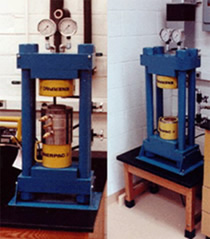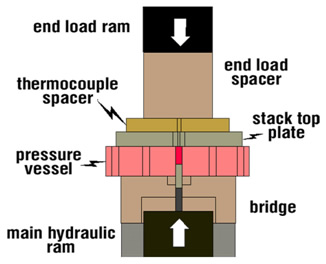
-
Brand
-
I want to
Purchasing Consult
Phychemi (Hongkong) Co., Ltd Beijing Office
More>>
Telephone: 86 10-60404693
Email: info@phychemi.comAfter-sales Service
Department of After-sales, Huazhong Business Center
More>>
Telephone: 86 27-65383415
WeChat: 17301044596
Email for complaint: info@phychemi.com
Email for application: applications@phychemi.comBusiness contract
Department of Commerce, Huazhong Business Center
More>>
Telephone: 86 27-87981101
Business contract and installation for South:
Email: business02@phychemi.com
Business contract and installation for North:
Email: business03@phychemi.com - Electrochemistry
-
Photoelectrochemistry
-
Multi Anvil
-
Vibration Isolation
-
Magnetic Cancel
-
Carbon Paper
MFC/MEC Reactor
Standard MFC Sterilizable MFC Single Chamber MEC Double Chamber MEC Sterilizable MECVRB Electrode
Graphite ElectrodeThermal Insulation
Insulation Felt -
BMP
-
Learning
-
News

Piston Cylinder Apparatus(Rockland)

The stack componentsare above and below the pressure vessel, shown here with a set of handles whichallow for easy maneuverability. Press dimensions are 72"h x 36"w x30"d.

Rockland pressurevessels and presses for use up to 35 kbar are available. We supply presses ofseveral sizes, depending upon your needs, including table-top units.
ARockland piston-cylinder system consists of a press, pressure vessel, stackcomponents and associated hydraulic control systems. A simple schematiccross-section of an apparatus is shown in the diagram below. In the diagram,the end load ram and main hydraulic ram are part of the press (not shown),while the remainder of the components, excluding the pressure vessel, are partof the "stack."
Theheart of the apparatus is the pressure vessel, which contains a tungstencarbide (WC) core supported by concentric rings of hardened steel, followingthe time-tested Boyd and England design. The sample assembly (red) iscompressed in the core of the vessel by a WC piston (brown), driven by a WCpush piece (dark grey). The force is provided by the main hydraulic ram actingagainst the sample assembly and stack top plate, which is confined by an endload applied by the upper hydraulic ram.
Uponapplication of the end load, the sample is pressurized in minutes with anelectrically-operated hydraulic pump driving the main ram. The system is calibratedby measuring the pressure dependence of some material property (e.g.,resistance) through the well-established phase transitions of differentmaterials. Temperatures as high as 2000°C or more can be achieved by passing acurrent through a cylindrical heater in the sample assembly. Although notexplicitly depicted in the diagram, coolant circulating through the stack topplate and bridge during high temperature operation is used to minimize thermalstresses in the pressure vessel. In addition to the press and hardware shownabove, Rockland can supply both pressure and temperature controllers for yourexperiments.






